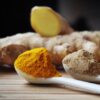Of all the avenues so far explored, the link between hyperactivity and food sensitivity is the most established and worthy of pursuit in any child showing signs of ADHD. Food allergies can be of two types:
Type one in the classical, severe and immediate allergy most commonly associated with peanuts and shellfish. This allergy involves an antibody called IgE and most people discover if they have this type of allergy early in life since the reaction is so immediate and severe.
The second type, which we will call Type two involves the IgG antibody which works in quite a different way. Symptoms of these allergies can be many and varied and may take many hours to appear. These allergies often go undetected for this reason and are classified as intolerances.
A study by Dr Joseph Bellanti of Georgetown University in Washington DC found that hyperactive children are seven times more likely to have food intolerances than other children.
Children with ADHD/hyperactivity may also have a sensitivity to additives and preservatives. A separate investigation by the Hyperactive Children’s Support Group found that:
89% of children with ADHD reacted to food colourings,
72% to flavourings,
60% to MSG,
45% to all synthetic additives/ preservatives,
50% to cow’s milk,
60% to chocolate and
40% to oranges.
Symptoms strongly linked to food intolerances include nasal problems and excessive mucus, ear infections, facial swelling and dark circles under the eyes, tonsillitis, digestive problems, bad breath, eczema, asthma, headaches and bedwetting.
Some parents have also reported success with the Feingold diet, removing not only all artificial additives but also foods that naturally contain certain compounds.
Researchers at the University of Sydney in Australia found that 3/4 of 86 children with ADHD reacted adversely to foods containing salicylates. These include prunes, raisins, raspberries, almonds, apricots, canned cherries, blackcurrants, oranges, strawberries, grapes, tomato sauce, plums, cucumbers and Granny Smith apples. As the list of foods containing salicylates is very long and contains many otherwise nutritious foods, cutting them all out should be considered only as a secondary course of action, and must be carefully planned and monitored by a nutritional therapist.
Understanding how a low salicylate diet helps hyperactive children does offer a useful alternative to such a drastic course of action. Salicylates inhibit the conversion and utilisation of essential fats, which we know are often low in hyperactive children. So instead of avoiding salicylates, it may help to simply increase the supply of essential fats.





